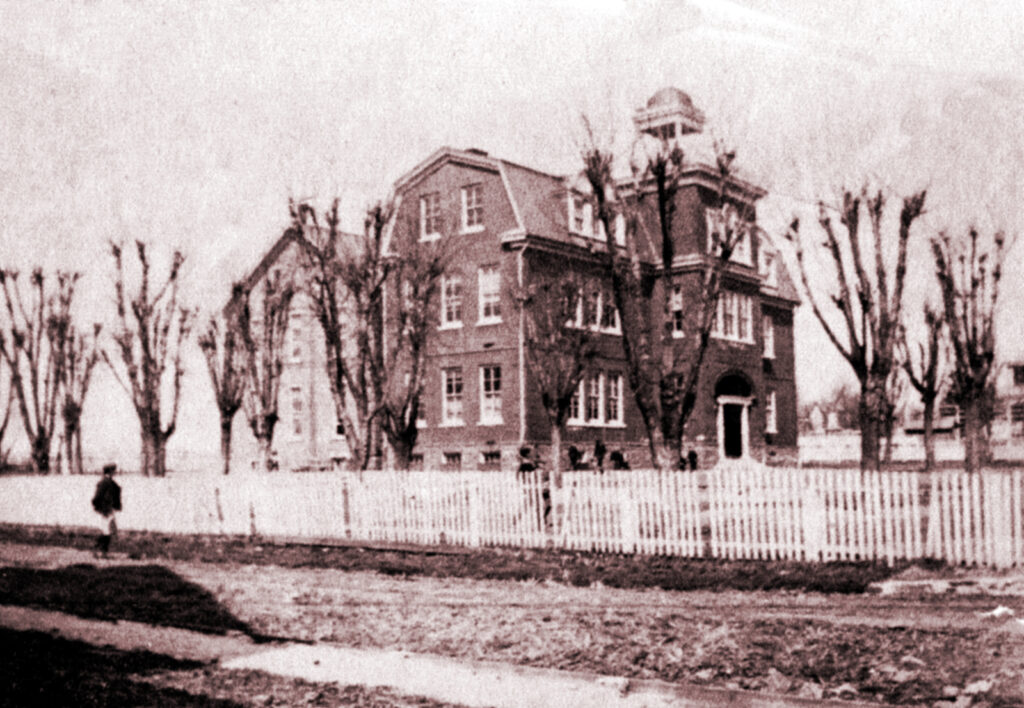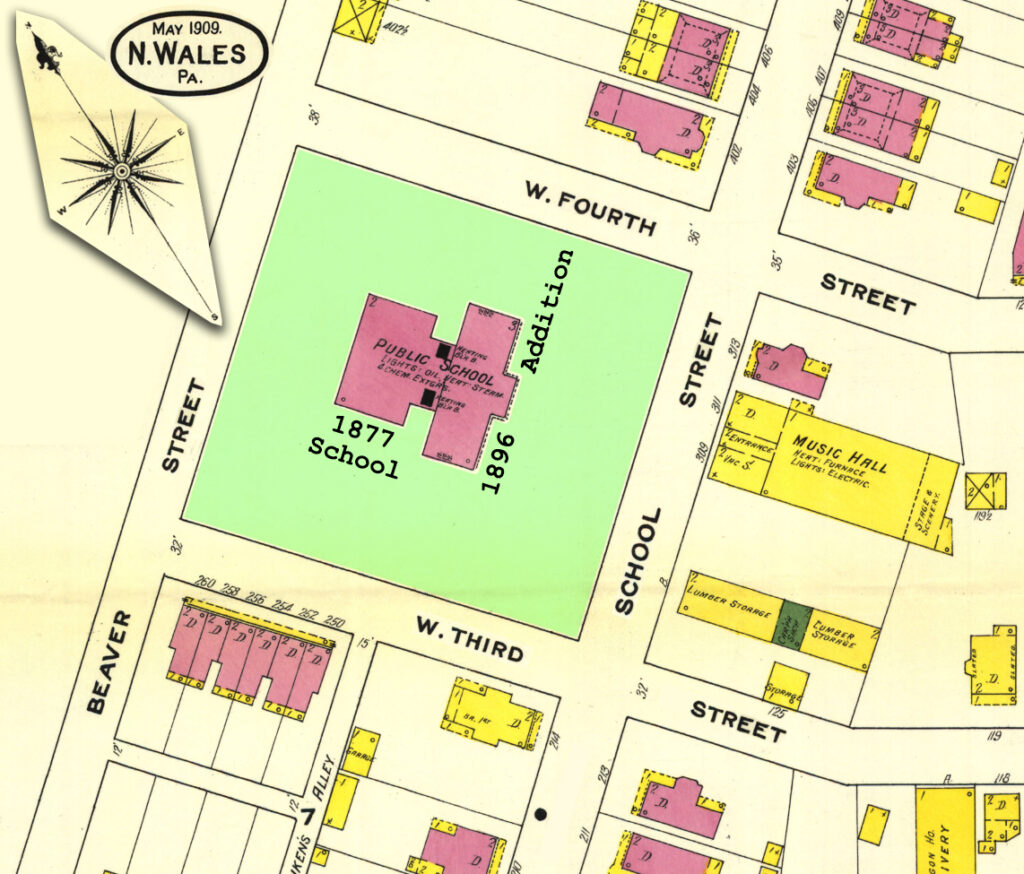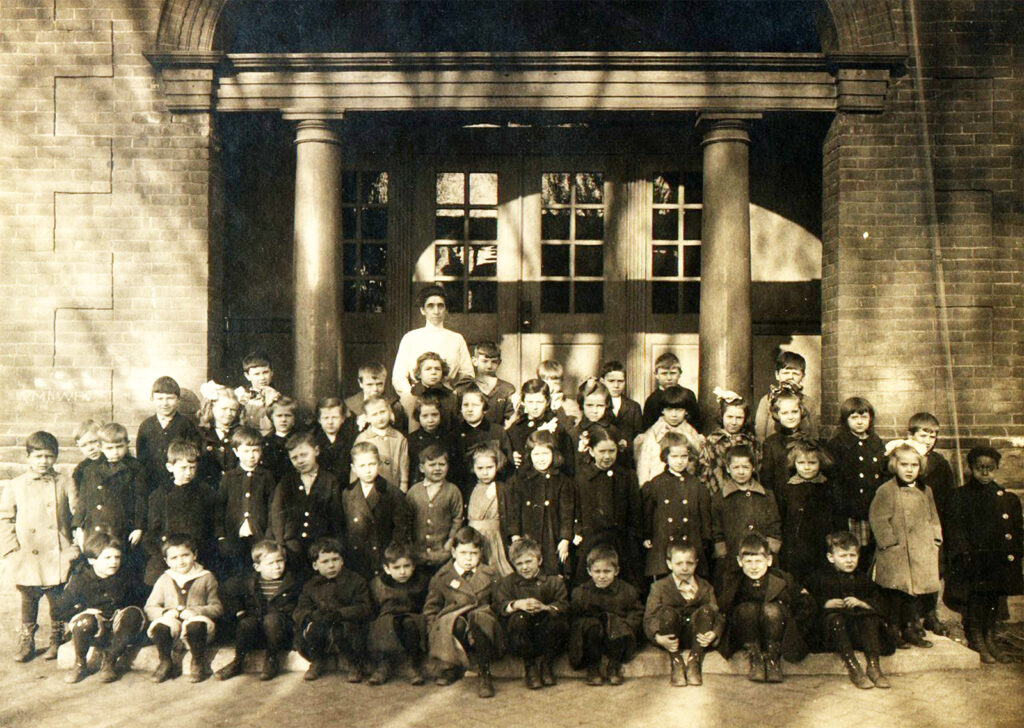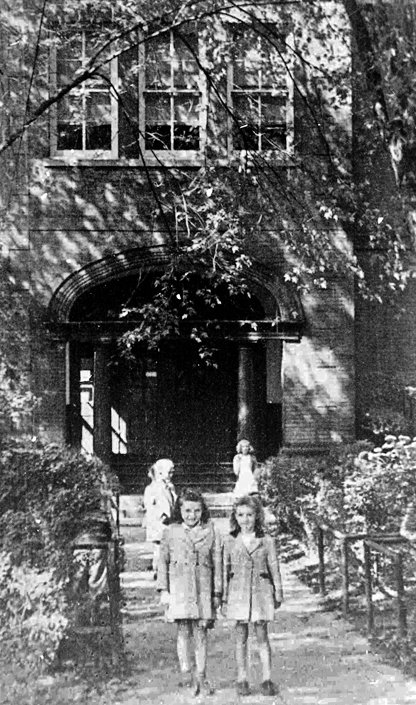Continuing with the story of the construction of the school building on School Street it seems that the remaining members of the school board did not take kindly to the charges hurled at them by Enos M. Lukens, for on November 17, 1877, they issued the following statement in the local newspaper, the North Wales Record:
“There has been considerable excitement in our borough the past few weeks, owing principally to certain charges and insinuations which appeared in the columns of the Record concerning the members of the school board, and particularly the president and secretary of said board. We deem it but just to take notice of said charges and insinuations as they are of a serious nature, affecting our reputation as officers and as citizens. If the facts were published, we are willing that our reputation as school directors may stand or fall on the merits of our acts. We positively say that neither the president, secretary nor any other member of the board has done any official act without the sanction of the board. As the charges were made either without a knowledge of the facts or with some evil intent, we consider it but fair that we have our accusers face to face, where we can have an opportunity of clearing ourselves of the charges, and where they can have the same opportunity of proving their statements. For this purpose we ask the citizens of the borough to meet at the new school house on Saturday, November 24, 1877 at 2 o’clock p. m., where we hope to meet a large number of our taxpayers, and especially the editors of the North Wales Record and Enos M. Lukens, who have already preferred charges. Signed Jonas H. Harley, B. K. Johnson, Henry W. Moyer, Joseph K. Anders, I. W. Wampole.”

Of course, all this controversy took place after the new building was opened which was on Monday, November 5, 1877, when we find the following in the North Wales Record of Saturday, November 10:
“The new borough school house of North Wales, which has been the subject of considerable comment during the past fortnight, was opened on Monday morning last. No special exercises were held. There were present Jonas Harley, president; Dr. B. K. Johnson, secretary; Harry W. Moyer, treasurer, and Esquire I. W. Wampole, of the school board. Joseph K. Anders and Enos M. Lukens, also members of the board, were absent. Soon after the opening of the schools, E. M. Rosenberger, the efficient principal, began an examination of the pupils for the purpose of grading the school, which now consists of three departments. These are, with their teachers, as follows: grammar, Mr. Rosenberger; secondary, Miss Lizzie Magee; primary, Miss Agnes Sibbald, all experienced teachers, and thoroughly qualified to discharge their duties faithfully and acceptably to both pupils and the public.

“The school opened with about nine inches of water surrounding one of the heaters and six inches surrounding the other. Shortly after 9 o’clock, however, two workmen were put to work with pails, and in a short time the water was carried out. The school rooms were warm and pleasant, and so far as we know, no complaint was made that they were in any wise disagreeable. What effect the water will have upon the health of the pupils, if permitted to collect in the cellar as it has been doing, is a question that we may be unable to solve, but it is reasonable to suppose that no good can accrue from it.
“The heaters are located near the center of the cellar, in an opening probably two or three feet lower than the cellar floor. We are not going to tell the public just now what we know about locating heaters, but we do say, in our opinion, a great mistake has been made, and we are not sure that their position can be improved upon at this late day.
“The workmanship on the school building executed by Hendricks & Baker of North Wales, has been completely and durably done. These men understand their business. They are practical and experienced builders, and whatever fault may be found with certain features connected with the construction of the building, the contractors are, we believe, free from all blame. The best of timber has been used throughout the building. It is covered by a splendid slate roof, is two and a half stories high, and built of brick. The belfry will be enclosed with blinds. The view from the belfry is magnificent and stretches over one of the finest agricultural districts in Montgomery county. The Blue Mountains of Lehigh county are plainly visible. Kulpsville and West Point show themselves to good advantage, and the scene is one to be enjoyed at any time:”

Also appearing in The Record: “A taxpayer” wanted to know if the pupils would be allowed to go fishing in the water that collected in the cellar of the new borough school house.
The school situation must have quieted down because we heard no more until the 25th of November 1878 when, we find the following in the local paper:
“On Monday afternoon last a large quantity of gas from the heaters in the borough high school escaped through the registers into the school rooms, and came near causing serious results. Many of the pupils were so overcome with the gas that they fainted, others were made sick in a terrible manner, and the schools had to be dismissed. That night severe headaches were common in almost every family, and physicians were in demand. It appears that the heaters had been filled with a fresh supply of coal at Monday noon, the dampers it is said, were shut off instead of opened, the flues had become choked up, thus throwing the vile gaseous fluid into school rooms.”
Our research fails to disclose anything further with regard to the school controversy, so we must therefore assume that harmony reigned.

Construction of the front half of the School Street building was started in June of 1896 when the books, maps and organs were removed from the school building to the homes of the members of the board and that of Prof. Harley.
W. H. Brunner, of Montgomery township, whose bid was $8,100, was given the contract to erect the new structure.
Next week we will give a sketch of one of our leading citizens whose tragic death on May 30, 1910, cut short the Memorial Day exercises in our town.
This post is sourced from a column entitled Early North Wales: Its History and Its People penned by long-time North Wales resident historian Leon T. Lewis. The article appeared in its original form in the May 19, 1959 issue of the North Penn Reporter.
